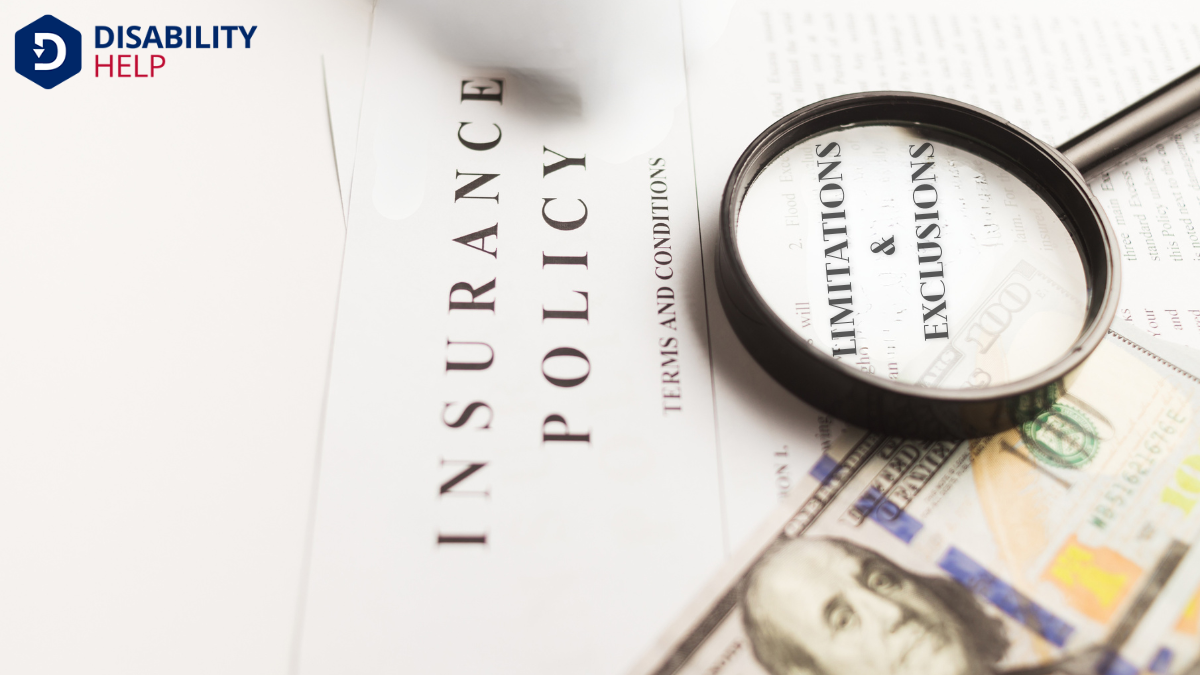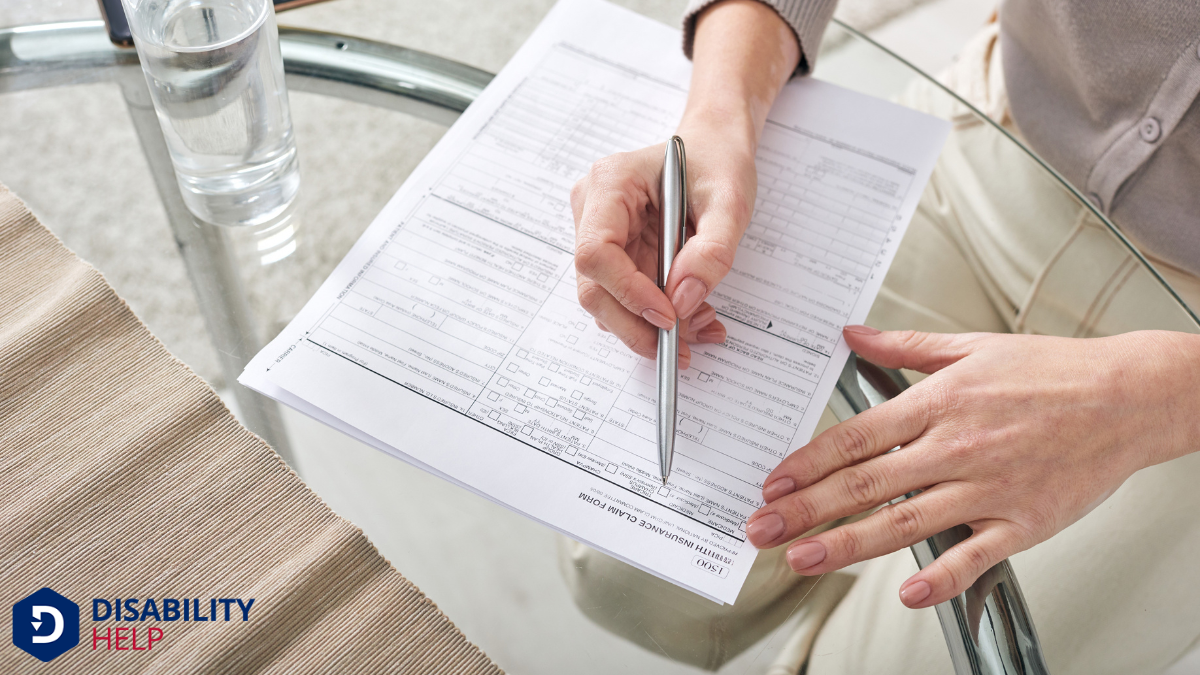Short-term disability insuranceInsurance that provides income replacement for a limited time when an employee is unable to work due... often covers partial disabilities, helping us when we can't perform all job duties due to illness or injury. Typically, we receive 50-70% of our normal income, but conditions must meet specific criteria and provide substantial medical evidence. Not every policy automatically includes partial disability benefitsFinancial assistance provided to individuals who are unable to work due to a disability, such as Soc..., so it's vital to understand our coverage details. To make the most of our benefits, coordination with employer plans is essential. Let's explore further to enhance our understanding.
Key Takeaways
- Partial disability benefits typically cover 50-70% of pre-disability earnings with a cap on maximum monthly benefits.
- Eligibility for partial disability benefits often requires a demonstrated reduction in income and medical evidence of limited job capacity.
- Not all short-term disability policies include partial disability benefits, and total disability may be a prerequisite.
- Earnings during partial disability can reduce the benefits received from short-term disability insuranceA form of insurance that provides income to individuals who are unable to work due to a disability..
- Proper documentation and communication with insurers are crucial for successful claims and maximizing benefits.
Definition of Partial Disability
Partial disability is a term that often comes up when discussing short-term disability insurance, and it’s essential to understand exactly what it entails.
When we talk about partial disability, we're referring to a situation where an individual is unable to perform some, but not all, of their job duties due to illness or injury. This means they can still work in a limited capacity, but their ability to earn a full income is reduced.
Imagine you're recovering from an injury and can only work part-time or with modified responsibilities. In this scenario, short-term disability insurance might provide benefits to help bridge the gap in your income.
Understanding partial disability helps us grasp how these insurance policies support us when we can't fully perform our jobs.
How Short-Term Disability Insurance Works

Let's explore how short-term disability insurance operates by looking at three main areas: coverage eligibility criteria, benefit calculation process, and claim filing steps.
First, we need to understand who qualifies for coverage and the specifics of what's included.
From there, we'll guide you through how benefits are calculated and the necessary steps to file a claim successfully.
Coverage Eligibility Criteria
When considering short-term disability insurance, understanding the coverage eligibility criteria is vital. We need to guarantee that we meet specific requirements to qualify for benefits. Generally, we must be employed and have a certain period of employment before becoming eligible. Some policies might require being actively at work when the disability starts.
It’s important to check the waiting period, which is the time we must be disabled before benefits kick in. Additionally, our disability must prevent us from performing our job duties, either partially or fully.
We should also keep in mind that pre-existing conditions mightn't be covered, depending on the policy. By knowing these criteria, we can make informed decisions and choose a plan that aligns with our needs.
Benefit Calculation Process
Understanding how the benefit calculation process works in short-term disability insurance is vital for maximizing our potential payouts. At its core, the process considers a percentage of our usual earnings, typically ranging from 50% to 70%, to determine the weekly benefit amount. This percentage varies by policy, so it’s important to review our specific plan details.
Our regular earnings are calculated based on our pre-disability income, often averaged over a specific period, like the last year.
It's also important to note any caps on the total payout amount. These caps guarantee that our benefits don't exceed a predetermined maximum, regardless of our earnings percentage. Knowing these specifics helps us better plan our finances during a period of reduced work capacity.
Claim Filing Steps
Filing a claim for short-term disability insurance involves several clear steps that can help us secure the benefits we need during challenging times.
First, we should promptly notify our employer or insurance provider about our disability. Timely communication guarantees they’re aware of our situation and can guide us through the process.
Next, we’ll need to complete the claim form accurately, providing essential details about our condition and how it affects our ability to work. We should attach any required medical documentation from our healthcare provider to support our claim.
Finally, we’ll submit everything to the insurance company for review. By following these steps diligently, we increase our chances of a smooth and successful claim process, guaranteeing timely support when we need it most.
Criteria for Partial Disability Coverage
A clear understanding of the criteria for partial disability coverage is vital for anyone considering or relying on short-term disability insurance.
Let’s explore the key factors insurers typically assess. First, they’ll evaluate the extent of your ability to perform job duties. Partial disability usually involves a reduction in capacity, not a complete inability to work.
We must provide medical evidence showing the condition considerably affects job performance. Insurers also look at how the disability reduces our income compared to pre-disability earnings.
It’s essential to check if the policy includes partial disability benefits, as not all do. Additionally, insurers might require that we be totally disabled before being partially disabled.
Understanding these criteria helps guarantee we’re adequately protected.
Benefit Calculations for Partial Disabilities
Once we grasp the criteria for partial disability coverage, the next step is figuring out how benefits are calculated. Understanding this empowers us to anticipate what financial support we might receive.
Typically, short-term disability insurance provides a percentage of our lost wages. Here’s how it often works:
- Percentage of Income: We’re usually paid a percentage (often 50-70%) of our pre-disability income.
- Maximum Benefit Limit: Insurers set a cap on the monthly benefits, so we can't exceed this limit.
- Duration of Benefits: Benefits are paid over a set period, typically up to a few months.
- Reduction for Earnings: If we earn any income while partially disabled, our benefits might be reduced accordingly.
Common Limitations and Exclusions

While short-term disability insurance offers valuable support, it’s crucial to be aware of its common limitations and exclusions. We often find that not all conditions are covered. For instance, pre-existing conditions mightn't qualify for benefits. Additionally, mental health issues, like stress or anxiety, are sometimes excluded.
It's also important to note that self-inflicted injuries usually don't qualify. We should consider the waiting period before benefits kick in. Most policies require a period of complete disability before partial disability benefits are accessible.
Moreover, coverage limits might cap the maximum benefit amount or duration. Let's also remember that some policies may exclude injuries sustained while committing a crime. Understanding these potential exclusions helps us make informed decisions and manage expectations effectively.
The Role of Employer-Sponsored Plans
Employer-sponsored plans play a significant role in providing short-term disability insurance, often making it more accessible and affordable for employees. By offering these plans, employers help us bridge the gap during temporary work absences.
Here are some key benefits of employer-sponsored short-term disability plans:
- Cost-effective coverage: Employers typically cover a portion or all of the premium costs, reducing our financial burden.
- Simplified enrollment: We often have easier access to coverage without the need for extensive underwriting or medical exams.
- Payroll deduction: Premiums can be conveniently deducted from our paychecks, ensuring continuous coverage.
- Group policy advantages: Employer plans may offer favorable terms compared to individual policies, providing us with more thorough protection.
Understanding these benefits can help us make informed decisions about our coverage options.
Coordination With Other Benefits
Let's explore how short-term disability insurance fits with other benefits we might have.
It's crucial to understand the integration process, ensuring we don't miss out due to overlapping coverage.
Benefits Integration Process
Steering the benefits integration process can seem complex, but it’s essential for guaranteeing that short-term disability insurance works seamlessly with other benefits. We want to guarantee that our coverage effectively supports us when dealing with partial disabilities.
By coordinating these benefits, we can prevent gaps in coverage and maximize our financial support. Here’s how we can manage this process:
- Review Policy Details: Let’s examine our disability policy and other benefits to understand how they interact.
- Consult HR or Benefits Specialists: Engaging with experts helps clarify integration specifics and address our questions.
- Document Communication: Keeping records of all interactions guarantees transparency and accountability.
- Regularly Update Information: Staying informed of any changes in policies or personal situations helps maintain peak coverage.
Understanding these steps guarantees that our benefits work harmoniously.
Overlapping Coverage Considerations
While maneuvering through the intricacies of short-term disability insurance, we must consider the potential for overlapping coverage with other benefits. It’s crucial to understand how these interactions can affect our overall financial support.
When we’re eligible for multiple benefits, such as workers' compensation or long-term disability, coordination guarantees we don’t receive more than what’s intended. Insurers often reduce short-term disability payouts by amounts received from other programs to prevent overcompensation.
We should review our policies carefully to identify any clauses regarding benefit offsets. By doing so, we can avoid unexpected financial shortfalls.
Let’s also communicate with human resources or insurance providers to clarify how benefits integrate. This understanding empowers us to make informed decisions, maximizing the support available during challenging times.
Filing a Claim for Partial Disability

Maneuvering the process of filing a claim for partial disability can initially seem intimidating, yet understanding the essential steps can greatly simplify it.
We should start by gathering necessary documentation and being aware of deadlines. Here’s a straightforward path:
- Review Your Policy: Familiarize ourselves with the specifics, ensuring our condition qualifies as a partial disability under the terms.
- Medical Documentation: Obtain thorough medical records and a detailed physician’s statement supporting our claim.
- Employer Notification: Inform our employer about our situation, as they may need to complete part of the claim form.
- Submit the Claim: Compile all necessary documents and submit the claim form to the insurance company promptly.
Tips for Maximizing Your Benefits
After successfully filing a claim for partial disability, it's important to focus on maximizing the benefits available to us.
First, let’s verify we comprehend our policy inside and out. We should review the details to know exactly what’s covered and any limitations. This knowledge empowers us to make informed decisions.
Next, maintaining open communication with our insurance provider is vital. Promptly inform them of any changes in our medical condition or work capacity. This helps avoid potential misunderstandings and guarantees we're receiving the appropriate benefits.
Additionally, let’s explore any available rehabilitationThe process of helping individuals with disabilities achieve and maintain their optimal physical, se... programs. These can aid in recovery and possibly enhance our ability to return to work sooner.
Conclusion
In maneuvering the complexities of short-term disability insurance for partial disabilities, we've uncovered key insights to empower our journey. By understanding definitions, criteria, and benefit calculations, we can better advocate for ourselves. Let's remember the importance of employer-sponsored plans and coordination with other benefits to maximize our coverage. When filing a claim, being informed and proactive is essential. Together, we can guarantee we're making the most of our benefits to support our recovery.






